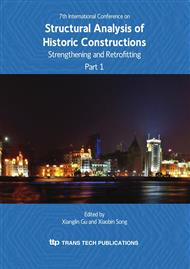p.131
p.137
p.143
p.149
p.155
p.163
p.169
p.175
p.181
Becoming Unsafe Overnight: Managing Historic Buildings as Building Regulations and Standards Change
Abstract:
Building standards and regulations have been around for a long time, and most historic structures were built in accordance with whatever codes existed at the time. However, as codes have changed (often in response to natural or human-caused disasters) these buildings have become progressively less compliant, making their continued occupation and use difficult without extensive and often damaging alterations to their significant spaces and fabric. In Australia, there have been considerable changes to standards over the past two hundred years to deal with apparent deficiencies in the codes exposed as a result of bushfires, earthquakes, cyclones and rising sea levels. Building regulations have also changed so as to deal in ever more detail with health and safety matters, as well as issues such as equitable access and energy efficiency. These changes have had an impact on historic buildings and structures, in the most extreme cases leading to loss of the building where owners anxious to redevelop can convince the authorities that preservation and upgrading to meet current standards will impose unreasonable economic hardship. In other cases, the insensitive and sometimes over-cautious application of codes (often to reduce the risk of future litigation or loss of insurance) leads to almost as much damage to the historic building as the upgrading work is intended to avoid if a disaster occurs. Conserving historic buildings while keeping them safely in active use requires a flexible and innovative approach to the regulations, as exemplified in the work of the Heritage Council of New South Wales Fire Access and Services Advisory Panel, of which the author was a foundation member.
Info:
Periodical:
Pages:
155-161
Citation:
Online since:
October 2010
Authors:
Price:
Сopyright:
© 2010 Trans Tech Publications Ltd. All Rights Reserved
Share:
Citation:



